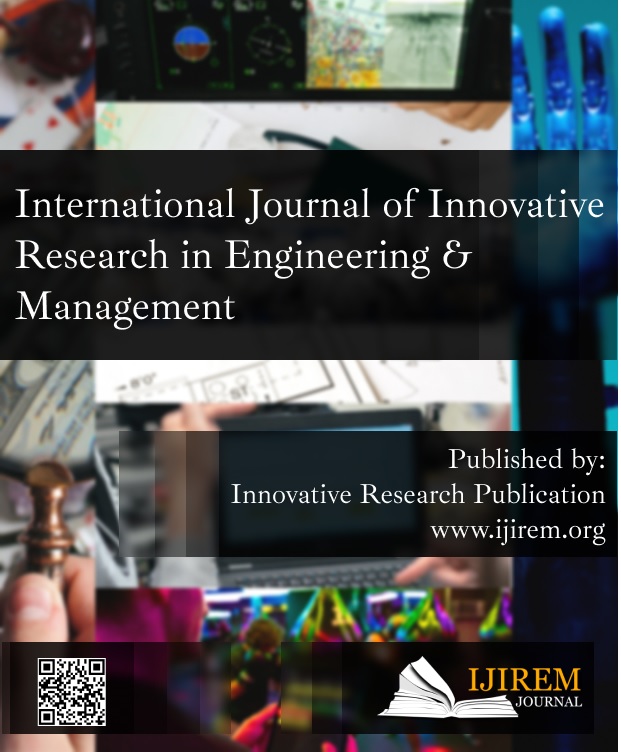Girl Education: A Way to Empowering Nation
Keywords:
Development, Gender, Girls, Growth, Women EducationAbstract
Education is an important factor for all Regardless of gender, a kid is a child. However, some communities continue to oppose females' education. Girls' empowerment, success, growth, and well-being are all influenced by their education. From the womb until the tomb, a child's future is fully known. In all areas, including economics, tutoring, social, political, health care, nutrition, and rights, as well as legal, there is persistent disparity and vulnerability of females. A girl's life will be filled with difficulties if her parents and guardians do not assist her together in noble way. Education is a means of empowering people and making life easier for them. Furthermore, prejudice against a female kid and a masculine child has existed from her birth. A child's upbringing in the countryside vs the city plays a vital role in her life duration, since urban culture improves a little for female children. The most important thing is to influence people's thinking, since that's the only ability to form a good difference for a girl. The focus of the current article is on a girl's condition and the corrective measures done in her life to prepare the path for her success overall development.
Downloads
References
A. Raj et al., “Students and brides: A qualitative analysis of the relationship between girls’ education and early marriage in Ethiopia and India,” BMC Public Health, 2019.
A. Jamal, “Why He Won’t Send His Daughter to School— Barriers to Girls’ Education in Northwest Pakistan: A Qualitative Delphi Study of Pashtun Men,” SAGE Open, 2016.
J. C. Pesambili and K. A. K. Mkumbo, “Implications of female genital mutilation on girls’ education and psychological wellbeing in Tarime, Tanzania,” J. Youth Stud., 2018.
J. Dyson, “Rethinking education as a contradictory resource: Girls’ education in the Indian Himalayas,” Geoforum, 2019.
S. Khoja-Moolji, “Suturing Together Girls and Education: An Investigation Into the Social (Re)Production of Girls’ Education as a Hegemonic Ideology,” Diaspora, Indig. Minor. Educ., 2015.
B. A. Abuya, W. M. Ngware, M. Mutisya, and M. Nyariro, “Girls’ primary education and transition to secondary school in Nairobi: perceptions of community members at the onset of an education intervention,” Int. J. Adolesc. Youth, 2017.
K. Gatskova, A. Ivlevs, and B. Dietz, “Can Labor Emigration Affect the Education of Girls? Evidence from Tajikistan,” Fem. Econ., 2019.
P. K. Mishra, U. S. Mishra, B. R. Mishra, and P. Mishra, “Capital market efficiency and economic growth: The case of India,” Eur. J. Econ. Financ. Adm. Sci., 2010.
S. Jain and S. Singh, “Prerna: engendering empowerment through girl education,” Int. J. Educ. Manag., 2017.
S. A. Mim, “Effects of Child Marriage on Girls’ Education and Empowerment,” J. Educ. Learn., 2017.
P. Ho, “An endogenous theory of property rights: opening the black box of institutions,” Journal of Peasant Studies. 2016.
S. Jain shipra.hitesh@gmail.com and S. Singh smita_saggi@rediffmail.com, “Prerna: engendering empowerment through girl education.,” Int. J. Educ. Manag., 2017.
B. Kim, “Short-term impacts of a cash transfer program for girls’ education on academic outcomes: Evidence from a randomized evaluation in Malawian secondary schools,” Seoul J. Econ., 2016.
E. Anderson and K. Grace, “From schoolgirls to ‘virtuous’ Khmer women: Interrogating Chbab Srey and gender in Cambodian education policy,” Stud. Soc. Justice, 2018.
F. Bobongie-Harris, “Girls’ education in the Solomon Islands: stories, research, and wantoks,” Ethnogr. Educ., 2021.
M. Krakowiak, “The Issue of Girls’ Education in Warsaw Ideological Magazines for Women (1907–1918),” Nauk. o Wych. Stud. Interdyscyplinarne, 2020.
K. MacDonald, “Calls for educating girls in the Third World: futurity, girls and the ‘Third World Woman,’” Gender, Place Cult., 2016.
D. T. Ireland, K. E. Freeman, C. E. Winston-Proctor, K. D. DeLaine, S. McDonald Lowe, and K. M. Woodson, “(Un)Hidden Figures: A Synthesis of Research Examining the Intersectional Experiences of Black Women and Girls in STEM Education,” Rev. Res. Educ., 2018.
J. Hargreaves and T. Boler, “Girl Power: The Impact of Girls’ Education on HIV and Sexual Behaviour,” ActionAid Int., 2006.
H. Borker, “Talim, Dindari aur Shaadi (Education, Religiosity and Marriage): Choosing Madrasa Education for Girls,” Soc. Change, 2020.
M. Delprato, K. Akyeampong, and M. Dunne, “Intergenerational Education Effects of Early Marriage in Sub-Saharan Africa,” World Dev., 2017.
N. Buchmann et al., “Power vs Money: Alternative Approaches to Reducing Child Marriage in Bangladesh, a Randomized Control Trial,” Field.Erica@Duke.Ed, 2017.
P. O. Adekola, M. A. Akanbi, and A. Olawole-Isaac, “A Qualitative Assessment of the Effects of Child Marriage on Female Education and Entrepreneurship in Northeastern Nigeria,” Int. J. Sci. Res. Multidiscip. Stud. ISROSET, 2016.
E. Unterhalter et al., “Girls Education and Gender Equality,” Int. J. Educ. Dev., 2014.
E. Unterhalter et al., “Girls’ education and gender equality: Education rigorous literature review,” Int. J. Educ. Dev., 2014.
A. S. L. A, “When girls’ lives matter: ending forced and early marriage in Cameroon. TT - ,” Qual. / Calid. / Qual., 2011.
